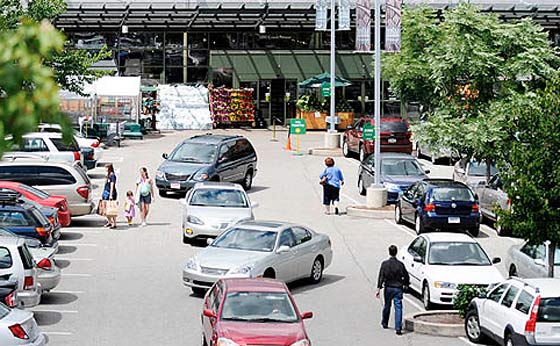Situational Awareness: Know The Baseline
The concept of situational awareness is simple enough, “to pay attention to what is happening around you”. Unfortunately though, this is not quite so simple for most people.
Here’s one way to train yourself to make it simple – know the ‘baseline’ of your surroundings (immediate environment). Here’s what I mean…
Most people are under the influence of normalcy bias. Because nothing (bad) has ever happened to them when they’re doing ‘this’ or ‘that’, therefore nothing (bad) is going to happen in the future when they’re doing ‘this’ or ‘that’. The ‘this’ could be anything – crossing the street, walking from your car to the store, taking a walk at your favorite park, shopping at the grocery store, driving to your friends house, hiking a familiar trail, etc..
Even if the warning signs are there – your normalcy bias will try and override your subconscious alerts. By being conscious of your normalcy bias (aware that it exists), you will be able to forcibly overcome it – eventually leading to a natural state of awareness.
Assuming that you are cognizant of your tendency towards normalcy bias and you are making the effort (consciously choosing) to pay attention to what is going on around you (situational awareness), you will need to understand (observe) and know the ‘baseline’ of your given surroundings to understand whether or not there is potential danger lurking there.
Every environment has its own baseline of ‘noise’ (for example). The ‘noise’ might literally be noise or it might be visual (the going’s on). The baseline is the normal ‘goings on’ of the place – the typical flow of people coming and going (affected by time of day, weather, etc.), the ebbs and flows of everything going on there, the actual noise level, behaviors, the profile of the people, etc. The baseline of one environment will be different for another environment.
The environments are many. The streets, the neighborhoods, the woods, the workplace, the stores – all of which are unique given their geographic locations, cultural or ethnic norms, etc.
Situational Awareness begins with knowing the baseline and then recognizing the changes and fluctuations to the baseline.
There may be times when it is normal for the ‘noise’ of a given baseline to rise and fall whereas there may be other environments where this would signal potential danger. It all depends.
To be effective, you must know the environment – the baseline. In this way you will recognize when there might be predatory behavior (for example). You must look beyond your nearby field of vision and steadily monitor the background activity for potential threats. After awhile this will become natural in your subconscious, provided that you begin by getting into the conscious habit of learning the baseline and then paying attention to variations in that baseline – no matter where you are and what you are doing.
All of the above is simply a round-about way of saying, “Pay attention!”

